
Echoes of History: A Journey Through Krakow and Warsaw
 7 Day Tour of Krakow and Warsaw
7 Day Tour of Krakow and Warsaw
Overview
Trip Map
Itinerary
Inclusions
Reviews







7 Days 6 Nights
Best Time: Jan-Dec
Jewish Heritage
WWII History & Communist Era
Embark on a 7-day odyssey through Krakow and Warsaw, tracing the poignant echoes of WWII and discovering the indomitable spirit of Poland's Jewish heritage. From the historic streets of Krakow's Jewish Quarter to the hallowed grounds of Auschwitz and the vibrant heart of Warsaw, this trip offers a deeply moving insight into heroism and hope. Highlights include private transfers, private guided tours revealing each city through the eyes of locals, and curated excursions to iconic sites. Exploring will be easy with Go Real Travel's expert travel guidance provided through our itinerary and mobile app.
- A guided tour of Krakow's historic center unveils the city's medieval beauty.
- Krakow's Jewish Quarter and Schindler's Factory Museum offer a glimpse into the city's Jewish past.
- Tour the poignant Warsaw Rising Museum and outstanding POLIN Museum of the History of Polish Jews.
- Tour Warsaw's Old Town, reborn from war's ashes, and relax in the serene beauty of Łazienki Park.
- Experience a profound visit to Auschwitz with the ease of a private transfer.
Embark on a 7-day odyssey through Krakow and Warsaw, tracing the poignant echoes of WWII and discovering the indomitable spirit of Poland's Jewish heritage. From the historic streets of Krakow's Jewish Quarter to the hallowed grounds of Auschwitz and the vibrant heart of Warsaw, this trip offers a deeply moving insight into heroism and hope. Highlights include private transfers, private guided tours revealing each city through the eyes of locals, and curated excursions to iconic sites. Exploring will be easy with Go Real Travel's expert travel guidance provided through our itinerary and mobile app.
- A guided tour of Krakow's historic center unveils the city's medieval beauty.
- Krakow's Jewish Quarter and Schindler's Factory Museum offer a glimpse into the city's Jewish past.
- Tour the poignant Warsaw Rising Museum and outstanding POLIN Museum of the History of Polish Jews.
- Tour Warsaw's Old Town, reborn from war's ashes, and relax in the serene beauty of Łazienki Park.
- Experience a profound visit to Auschwitz with the ease of a private transfer.

Old Town
Architecture

St. Mary's Basilica
Churches & Monasteries

Wawel Castle
Castles & Chateaux

Schindler Museum
The Great War & WWII

Kosciuszko Mound
Historic Landmarks

Royal Castle
Castles & Chateaux

Palace of Culture & Science
Architecture

Old Town Square
UNESCO World Heritage

Warsaw Uprising Museum
The Great War & WWII
Must see sights

Old Town
Architecture

St. Mary's Basilica
Churches & Monasteries

Wawel Castle
Castles & Chateaux

Schindler Museum
The Great War & WWII

Kosciuszko Mound
Historic Landmarks

Royal Castle
Castles & Chateaux

Palace of Culture & Science
Architecture

Old Town Square
UNESCO World Heritage

Warsaw Uprising Museum
The Great War & WWII
Starting from
$1265
per person
 Not included
Not included Secure Your Customizable Trip
Enter your details to embark on a journey that can be tailored just for you.
Start
Travelers
0 travelers
Add Room
Remove Room
Preferred Hotel Stars
Select Hotel Stars
Craft Your Own Itinerary
Select your interests and destinations for a trip plan inspired by you.
Echoes of History Trip - Map & Itinerary
Enable/Disable Map Scrolling
Click To Make Map Interactive

Echoes of History Trip Timeline
 Edit Details
Edit DetailsArrival
3 nights
Krakow
Poland
Train: 2.5h
3 nights
Warsaw
Poland
Departure
Day-By-Day Itinerary of Echoes of History Trip
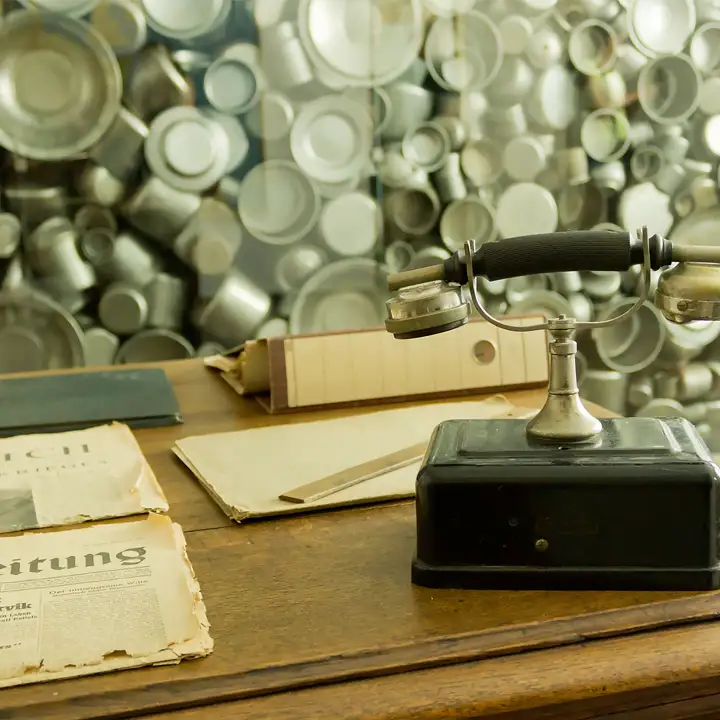
Day 1
Arrive Krakow
Day 1
Arrive Krakow



To Be Determined
Private Krakow Airport Pickup
We will schedule a pick up for 30 minutes after your flight's arrival time. You will be met in the terminal by a driver holding a sign with your name on it. The ride is for your party only - you will not be sharing a vehicle. The cost of the ride is included in your package, and you will not have to pay the driver.

Day 1
Arrive Krakow


Day 1
Arrive Krakow




To Be Determined:
Private Krakow Airport Pickup
Mid-Day/Afternoon:
Schindler's Factory Museum
Late Afternoon/Early Evening:
Jewish Quarter

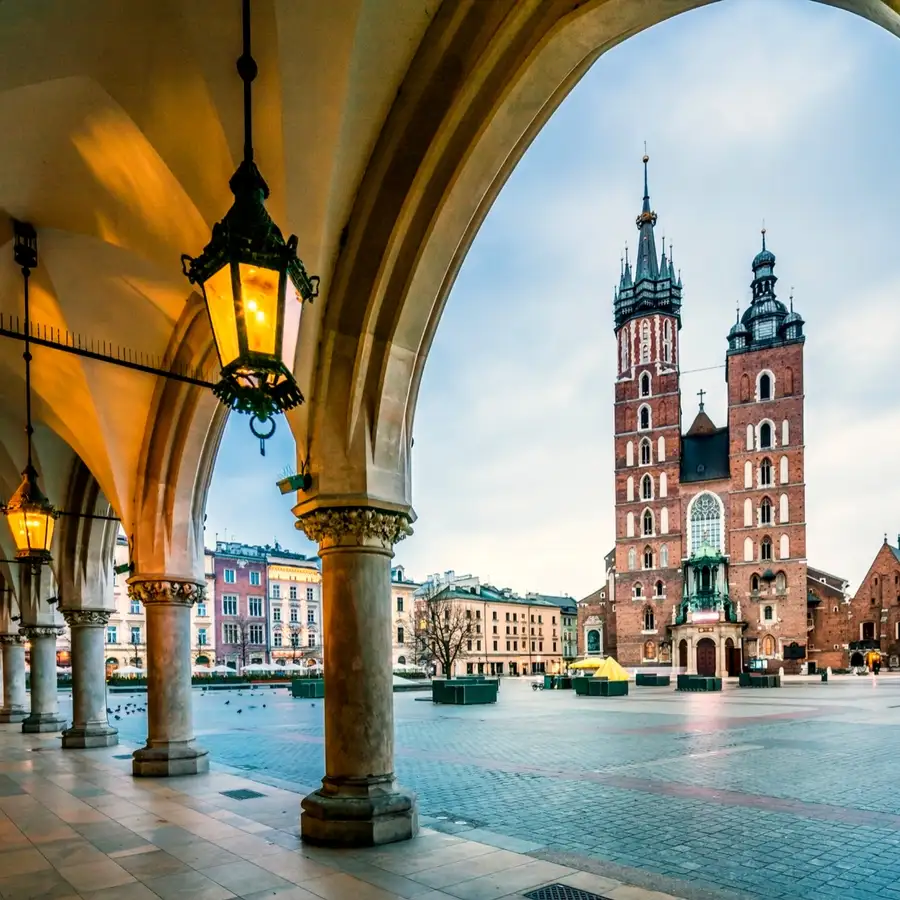
Day 2
Krakow
Day 2
Krakow



9:30 AM - 12:30 PM
Krakow Guided Walk
On this three-hour guided walking tour, you will discover the history and legends of old Krakow and gain an excellent overview of the city. The many layers of the city will be revealed to you as your guide points out medieval, Renaissance, and Baroque architecture. You will learn about not only Krakow's glory days many centuries past but also about its more recent struggles during Nazism and Communism oppression.

Old Town-Rail Station Tunnel
Show More
Show More


Cloth Hall
Take home something special from a vast market hall built in the 14th century, which is surrounded by arcaded passageways and topped with rows of gargoyles.
Show More

Old Town-Rail Station Tunnel
Show More
Show More


Cloth Hall
Take home something special from a vast market hall built in the 14th century, which is surrounded by arcaded passageways and topped with rows of gargoyles.
Show More

Old Town-Rail Station Tunnel
Show More
Show More


Cloth Hall
Take home something special from a vast market hall built in the 14th century, which is surrounded by arcaded passageways and topped with rows of gargoyles.
Show More
prev
next

Day 2
Krakow

Old Town-Rail Station Tunnel
 Highlight of Krakow Guided Walk
Highlight of Krakow Guided Walk
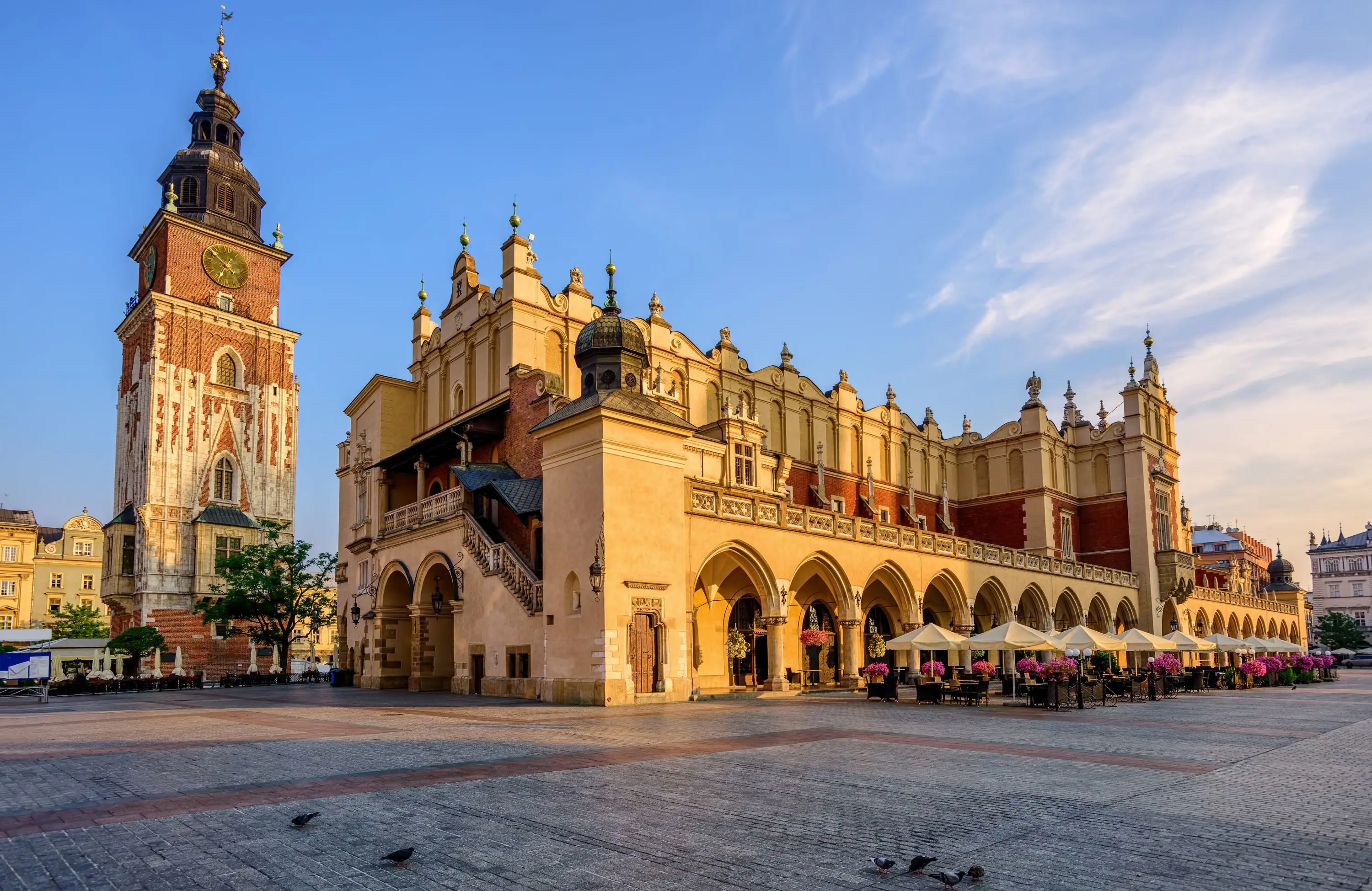
Cloth Hall
 Highlight of Krakow Guided Walk
Highlight of Krakow Guided WalkTake home something special from a vast market hall built in the 14th century, which is surrounded by arcaded passageways and topped with rows of gargoyles.
The covered market continues a centuries-old tradition with an eclectic range of goods of sale – you might be most interested in the amber jewelry or the handicraft items from the Podhale region. On the upper floor, you will find the 19th Century Polish Art Museum which features truly beautiful and under-appreciated artwork that packs a mighty patriotic punch.
Old Town-Rail Station Tunnel
 Highlight of Krakow Guided Walk
Highlight of Krakow Guided Walk

Cloth Hall
 Highlight of Krakow Guided Walk
Highlight of Krakow Guided WalkTake home something special from a vast market hall built in the 14th century, which is surrounded by arcaded passageways and topped with rows of gargoyles.
The covered market continues a centuries-old tradition with an eclectic range of goods of sale – you might be most interested in the amber jewelry or the handicraft items from the Podhale region. On the upper floor, you will find the 19th Century Polish Art Museum which features truly beautiful and under-appreciated artwork that packs a mighty patriotic punch.
Old Town-Rail Station Tunnel
 Highlight of Krakow Guided Walk
Highlight of Krakow Guided Walk

Cloth Hall
 Highlight of Krakow Guided Walk
Highlight of Krakow Guided WalkTake home something special from a vast market hall built in the 14th century, which is surrounded by arcaded passageways and topped with rows of gargoyles.
The covered market continues a centuries-old tradition with an eclectic range of goods of sale – you might be most interested in the amber jewelry or the handicraft items from the Podhale region. On the upper floor, you will find the 19th Century Polish Art Museum which features truly beautiful and under-appreciated artwork that packs a mighty patriotic punch.
prev
next


Day 3
Krakow
Day 3
Krakow


8:00 AM - 2:30 PM
Excursion to Auschwitz w/ Private Transfer
There is no shortage of cruelty and evil to be found in human history, but the Holocaust stands out as perhaps the greatest of these evils, in both scale and conception. The Holocaust's most significant historical sites, the concentration camp of Auschwitz and its auxiliary camp of Birkenau, are located a little over an hour from Krakow. This guided tour includes private transfers to and from Auschwitz but a group tour around the camp.

Day 3
Krakow



Day 4
Krakow to Warsaw
Day 4
Krakow to Warsaw





9:00 AM - 12:00 PM
Guided Walk, Jewish Quarter
On this three-hour guided walking tour, you will discover what was once home to one of Europe's largest and most influential Jewish communities - numbering over 60,000 residents at its height. While most of its residents were tragically killed in the Holocaust, they left behind a rich historical legacy, including numerous beautiful synagogues now open for visitors.

Szeroka
Visit the historic street that was the center of Kazimierz's Jewish community.
Show More

Szeroka
Visit the historic street that was the center of Kazimierz's Jewish community.
Show More

Szeroka
Visit the historic street that was the center of Kazimierz's Jewish community.
Show More

Szeroka
Visit the historic street that was the center of Kazimierz's Jewish community.
Show More

Szeroka
Visit the historic street that was the center of Kazimierz's Jewish community.
Show More
prev
next

Day 4
Krakow to Warsaw


Szeroka
 Highlight of Guided Walk, Jewish Quarter
Highlight of Guided Walk, Jewish QuarterVisit the historic street that was the center of Kazimierz's Jewish community.
This wide street (Szeroka actually means wide) acted as a sort of square and marketplace for the community. While today well-maintained buildings line it, in the 19th century it would have been better described as "bustling" than "quaint". You can find all the major Jewish heritage sites nearby, including Krakow's oldest synagoague, the fortress-like Old Synagogue, which sits on the southern end of the street. Today it houses a museum of Jewish heritage.

Szeroka
 Highlight of Guided Walk, Jewish Quarter
Highlight of Guided Walk, Jewish QuarterVisit the historic street that was the center of Kazimierz's Jewish community.
This wide street (Szeroka actually means wide) acted as a sort of square and marketplace for the community. While today well-maintained buildings line it, in the 19th century it would have been better described as "bustling" than "quaint". You can find all the major Jewish heritage sites nearby, including Krakow's oldest synagoague, the fortress-like Old Synagogue, which sits on the southern end of the street. Today it houses a museum of Jewish heritage.

Szeroka
 Highlight of Guided Walk, Jewish Quarter
Highlight of Guided Walk, Jewish QuarterVisit the historic street that was the center of Kazimierz's Jewish community.
This wide street (Szeroka actually means wide) acted as a sort of square and marketplace for the community. While today well-maintained buildings line it, in the 19th century it would have been better described as "bustling" than "quaint". You can find all the major Jewish heritage sites nearby, including Krakow's oldest synagoague, the fortress-like Old Synagogue, which sits on the southern end of the street. Today it houses a museum of Jewish heritage.

Szeroka
 Highlight of Guided Walk, Jewish Quarter
Highlight of Guided Walk, Jewish QuarterVisit the historic street that was the center of Kazimierz's Jewish community.
This wide street (Szeroka actually means wide) acted as a sort of square and marketplace for the community. While today well-maintained buildings line it, in the 19th century it would have been better described as "bustling" than "quaint". You can find all the major Jewish heritage sites nearby, including Krakow's oldest synagoague, the fortress-like Old Synagogue, which sits on the southern end of the street. Today it houses a museum of Jewish heritage.

Szeroka
 Highlight of Guided Walk, Jewish Quarter
Highlight of Guided Walk, Jewish QuarterVisit the historic street that was the center of Kazimierz's Jewish community.
This wide street (Szeroka actually means wide) acted as a sort of square and marketplace for the community. While today well-maintained buildings line it, in the 19th century it would have been better described as "bustling" than "quaint". You can find all the major Jewish heritage sites nearby, including Krakow's oldest synagoague, the fortress-like Old Synagogue, which sits on the southern end of the street. Today it houses a museum of Jewish heritage.
prev
next


Day 5
Warsaw
Day 5
Warsaw




9:00 AM - 11:30 AM
Old Town Walking Tour, Guided
On this 2.5-hour walking tour, you will be shown around Warsaw's UNESCO-listed Old Town, including the old market square and the famous Mermaid Monument in the middle of it. You will be taken along the beautifully recreated cobbled streets around the square while your guide recounts the stories of the historic building lining them, as well as the story of their post-WWII reconstruction.

Warsaw Mermaid
Warsaw Mermaid (Warszawska Syrenka) is the official symbol of Warsaw.
Show More

Warsaw's Royal Castle
Tour the impressive Royal Castle for an entertaining crash course in Warsaw and Polish history.
Show More

Warsaw Mermaid
Warsaw Mermaid (Warszawska Syrenka) is the official symbol of Warsaw.
Show More

Warsaw's Royal Castle
Tour the impressive Royal Castle for an entertaining crash course in Warsaw and Polish history.
Show More

Warsaw Mermaid
Warsaw Mermaid (Warszawska Syrenka) is the official symbol of Warsaw.
Show More

Warsaw's Royal Castle
Tour the impressive Royal Castle for an entertaining crash course in Warsaw and Polish history.
Show More
prev
next

Day 5
Warsaw


Warsaw Mermaid
 Highlight of Old Town Walking Tour, Guided
Highlight of Old Town Walking Tour, GuidedWarsaw Mermaid (Warszawska Syrenka) is the official symbol of Warsaw.
On the square, Syrenka appeared in the 19th century. According to the legend, she is the sister of Copenhagen Mermaid.

Warsaw's Royal Castle
 Highlight of Old Town Walking Tour, Guided
Highlight of Old Town Walking Tour, GuidedTour the impressive Royal Castle for an entertaining crash course in Warsaw and Polish history.
Like everything else in central Warsaw, the Royal Castle was heavily damaged during the German bombing campaign that sparked WWII in September 1939 and was then completely and literally reduced to smoldering dust in 1944 in revenge for the failed Warsaw Uprising. What you see today is a carbon copy built in the 1970s when the Communist authorities became desperate to position themselves as 'socialist patriots' following decades of delay in the building schedule. Opened to the public in 1984, the Castle today is filled with period furniture and works of art. Highlights of the castle tour include the Great Apartment and its magnificent Great Assembly Hall, which has been restored to its 18th-century decor of dazzling gilded stucco and golden columns. The neighboring National Hall was conceived as a national pantheon; the six huge canvases (surviving originals) depict pivotal scenes from Polish history. Further on from the National Hall is the lavishly decorated Throne Room. Connected by a short corridor is the King’s Apartment, the highlight of which is the Canaletto Room at the far end. An impressive array of 23 paintings by Bernardo Bellotto, better known in Poland as Canaletto, captures Warsaw's mid-18th-century heyday in great detail. The works were of immense help in reconstructing the city’s historic facades.

Warsaw Mermaid
 Highlight of Old Town Walking Tour, Guided
Highlight of Old Town Walking Tour, GuidedWarsaw Mermaid (Warszawska Syrenka) is the official symbol of Warsaw.
On the square, Syrenka appeared in the 19th century. According to the legend, she is the sister of Copenhagen Mermaid.

Warsaw's Royal Castle
 Highlight of Old Town Walking Tour, Guided
Highlight of Old Town Walking Tour, GuidedTour the impressive Royal Castle for an entertaining crash course in Warsaw and Polish history.
Like everything else in central Warsaw, the Royal Castle was heavily damaged during the German bombing campaign that sparked WWII in September 1939 and was then completely and literally reduced to smoldering dust in 1944 in revenge for the failed Warsaw Uprising. What you see today is a carbon copy built in the 1970s when the Communist authorities became desperate to position themselves as 'socialist patriots' following decades of delay in the building schedule. Opened to the public in 1984, the Castle today is filled with period furniture and works of art. Highlights of the castle tour include the Great Apartment and its magnificent Great Assembly Hall, which has been restored to its 18th-century decor of dazzling gilded stucco and golden columns. The neighboring National Hall was conceived as a national pantheon; the six huge canvases (surviving originals) depict pivotal scenes from Polish history. Further on from the National Hall is the lavishly decorated Throne Room. Connected by a short corridor is the King’s Apartment, the highlight of which is the Canaletto Room at the far end. An impressive array of 23 paintings by Bernardo Bellotto, better known in Poland as Canaletto, captures Warsaw's mid-18th-century heyday in great detail. The works were of immense help in reconstructing the city’s historic facades.

Warsaw Mermaid
 Highlight of Old Town Walking Tour, Guided
Highlight of Old Town Walking Tour, GuidedWarsaw Mermaid (Warszawska Syrenka) is the official symbol of Warsaw.
On the square, Syrenka appeared in the 19th century. According to the legend, she is the sister of Copenhagen Mermaid.

Warsaw's Royal Castle
 Highlight of Old Town Walking Tour, Guided
Highlight of Old Town Walking Tour, GuidedTour the impressive Royal Castle for an entertaining crash course in Warsaw and Polish history.
Like everything else in central Warsaw, the Royal Castle was heavily damaged during the German bombing campaign that sparked WWII in September 1939 and was then completely and literally reduced to smoldering dust in 1944 in revenge for the failed Warsaw Uprising. What you see today is a carbon copy built in the 1970s when the Communist authorities became desperate to position themselves as 'socialist patriots' following decades of delay in the building schedule. Opened to the public in 1984, the Castle today is filled with period furniture and works of art. Highlights of the castle tour include the Great Apartment and its magnificent Great Assembly Hall, which has been restored to its 18th-century decor of dazzling gilded stucco and golden columns. The neighboring National Hall was conceived as a national pantheon; the six huge canvases (surviving originals) depict pivotal scenes from Polish history. Further on from the National Hall is the lavishly decorated Throne Room. Connected by a short corridor is the King’s Apartment, the highlight of which is the Canaletto Room at the far end. An impressive array of 23 paintings by Bernardo Bellotto, better known in Poland as Canaletto, captures Warsaw's mid-18th-century heyday in great detail. The works were of immense help in reconstructing the city’s historic facades.
prev
next


Day 6
Warsaw
Day 6
Warsaw


Morning to Afternoon
Jewish Museum
Winner of the 2016 'Oscar' for museum design, the POLIN museum is a brilliant example of the new generation of multi-media narrative history museums, and demonstrates Poland's determination to re-tell its history after decades of suppression under the former Communist regime. Built on a former Jewish Ghetto site in front of the Ghetto Heroes Monument, which memorializes the 1943 uprising within the Warsaw ghetto, the museum's core exhibition occupies more than 4,000 square meters (43,000 sq ft) of space. It consists of eight galleries that document and celebrate the thousand-year history of the Jewish community in Poland – once the largest Jewish community in the world – that was almost entirely obliterated during the Holocaust. The Holocaust fills only one of the eight galleries, and thus does not overshadow the long and rich history that preceded it. Highlights include early Jewish manuscripts, re-creations of 18th century Jewish town life (including a scale replica of the Gwozdziec synagogue with its colorful painted interior), a religious school and a busy Warsaw street from the early 20th century. All this is done using sound effects and modern projection techniques, vintage photographs and films, histories of Polish-born movements from Hasidism to Zionism, and a vast multimedia network encompassing more than 250 computer terminals. This is a museum full of noise and color; with echoes of centuries of Yiddish chatter and the soulful sounds of klezmer music. No visitor will leave unmoved.

Day 6
Warsaw



Day 7
Depart Warsaw
Day 7
Depart Warsaw


Morning
Łazienki Park
The old royal parks south of the city center are one of Warsaw's best features. Indeed, these beautiful parks are some of the most attractive in all of Europe. The most luxuriant of the parks, Łazienki Park, was once a hunting ground which was later transformed into an English-style park with formal gardens and the exquisite"Palace on the Isle" built across the park lake. A large statue of Chopin near the palace is a favorite venue for summer concerts, while another nearby attraction is the Belvedere, the official residence of Polish heads of state from the end to World War I until 1995 when Lech Wałęsa moved it to the current Presidential Palace near the Royal Castle. But there's no need to worry about hitting all the attractions in the park; just being in such a peaceful and pretty setting is the main objective. Lovely in all four seasons, you can simply stroll the oak-lined promenades and pathways and watch the park's resident fauna, including peacocks, squirrels, and mandarin ducks. It's also a great place to rent a bicycle or boat, go for a jog, or have a picnic amongst the locals who are enjoying the same experiences.

Palace on the Isle
Enjoy the exquisite setting of this palace on a small island amidst the park's lake.
Show More

Ujazdowski Palace
Take a break from nature to check out some contemporary art.
Show More

Chopin Monument
Catch a free outdoor concert at the Chopin Monument.
Show More

Palace on the Isle
Enjoy the exquisite setting of this palace on a small island amidst the park's lake.
Show More

Ujazdowski Palace
Take a break from nature to check out some contemporary art.
Show More

Chopin Monument
Catch a free outdoor concert at the Chopin Monument.
Show More

Palace on the Isle
Enjoy the exquisite setting of this palace on a small island amidst the park's lake.
Show More
prev
next

Day 7
Depart Warsaw


Palace on the Isle
 Highlight of Łazienki Park
Highlight of Łazienki ParkEnjoy the exquisite setting of this palace on a small island amidst the park's lake.
Located in the middle of the park lake is the Neoclassical Łazienkowski Palace - the best memorial to Stanisław August, the country's last and most cultured monarch. It was built on the site of a bathhouse erected for another member of royalty, hence the name "Łazienki" meaning simply "baths". Often referred to as the Palace on the Isle (Pałac Na Wyspie) due to its location, it is connected to the surrounding park by two collonaded bridges, creating a remarkably romantic setting. It is the smallest of Warsaw's royal palaces, and it can be visited without a guided tour. The ornately decorated interiors of the palace are well worth seeing. The palace Picture Gallery contains works by Rubens and Rembrandt, and one of the most attractive theaters in Warsaw can be found within it as well. The highlight though may be the colorful Solomon Room, with its walls covered in paintings depicting the History of Solomon. In addition to the palace itself, a large terrace with a fountain also sits on the island. Steps lead down into the water where small boats wait for passengers. You'll probably want to take lots of photos, as well as take some time to just sit on the steps of terrace and watch the swans float by. Within sight of the palace is another interesting little island, which serves as the stage for a small classical style theater sitting on the shore of the lake.

Ujazdowski Palace
 Highlight of Łazienki Park
Highlight of Łazienki ParkTake a break from nature to check out some contemporary art.
Ujazdowski Palace was once inhabited by King Stanisław August's Italian-born mother. These days it's home to the Contemporary Art Centre, the city's leading venue for modern art shows.

Chopin Monument
 Highlight of Łazienki Park
Highlight of Łazienki ParkCatch a free outdoor concert at the Chopin Monument.
Just inside the park near the Łazienki Królewskie bus stop, you can find a statue of Poland's greatest composer Frederic Chopin. This is the setting for regular free Chopin recitals that take place here every Sunday between 12pm-4pm, from mid-May to late September. To find out what the programme is for each individual Sunday, go to www.lazienki-krolewskie.pl/en/.

Palace on the Isle
 Highlight of Łazienki Park
Highlight of Łazienki ParkEnjoy the exquisite setting of this palace on a small island amidst the park's lake.
Located in the middle of the park lake is the Neoclassical Łazienkowski Palace - the best memorial to Stanisław August, the country's last and most cultured monarch. It was built on the site of a bathhouse erected for another member of royalty, hence the name "Łazienki" meaning simply "baths". Often referred to as the Palace on the Isle (Pałac Na Wyspie) due to its location, it is connected to the surrounding park by two collonaded bridges, creating a remarkably romantic setting. It is the smallest of Warsaw's royal palaces, and it can be visited without a guided tour. The ornately decorated interiors of the palace are well worth seeing. The palace Picture Gallery contains works by Rubens and Rembrandt, and one of the most attractive theaters in Warsaw can be found within it as well. The highlight though may be the colorful Solomon Room, with its walls covered in paintings depicting the History of Solomon. In addition to the palace itself, a large terrace with a fountain also sits on the island. Steps lead down into the water where small boats wait for passengers. You'll probably want to take lots of photos, as well as take some time to just sit on the steps of terrace and watch the swans float by. Within sight of the palace is another interesting little island, which serves as the stage for a small classical style theater sitting on the shore of the lake.

Ujazdowski Palace
 Highlight of Łazienki Park
Highlight of Łazienki ParkTake a break from nature to check out some contemporary art.
Ujazdowski Palace was once inhabited by King Stanisław August's Italian-born mother. These days it's home to the Contemporary Art Centre, the city's leading venue for modern art shows.

Chopin Monument
 Highlight of Łazienki Park
Highlight of Łazienki ParkCatch a free outdoor concert at the Chopin Monument.
Just inside the park near the Łazienki Królewskie bus stop, you can find a statue of Poland's greatest composer Frederic Chopin. This is the setting for regular free Chopin recitals that take place here every Sunday between 12pm-4pm, from mid-May to late September. To find out what the programme is for each individual Sunday, go to www.lazienki-krolewskie.pl/en/.

Palace on the Isle
 Highlight of Łazienki Park
Highlight of Łazienki ParkEnjoy the exquisite setting of this palace on a small island amidst the park's lake.
Located in the middle of the park lake is the Neoclassical Łazienkowski Palace - the best memorial to Stanisław August, the country's last and most cultured monarch. It was built on the site of a bathhouse erected for another member of royalty, hence the name "Łazienki" meaning simply "baths". Often referred to as the Palace on the Isle (Pałac Na Wyspie) due to its location, it is connected to the surrounding park by two collonaded bridges, creating a remarkably romantic setting. It is the smallest of Warsaw's royal palaces, and it can be visited without a guided tour. The ornately decorated interiors of the palace are well worth seeing. The palace Picture Gallery contains works by Rubens and Rembrandt, and one of the most attractive theaters in Warsaw can be found within it as well. The highlight though may be the colorful Solomon Room, with its walls covered in paintings depicting the History of Solomon. In addition to the palace itself, a large terrace with a fountain also sits on the island. Steps lead down into the water where small boats wait for passengers. You'll probably want to take lots of photos, as well as take some time to just sit on the steps of terrace and watch the swans float by. Within sight of the palace is another interesting little island, which serves as the stage for a small classical style theater sitting on the shore of the lake.
prev
next

What's Included In Echoes of History Trip

Pre-Paid Tours and Activities:
- Walking Tour of Krakow's Historic Center
- Excursion to Auschwitz Concentration Camp including Private Transfer
- Guided Walking Tour of the Jewish Quarter
- Half-Day Guided Walking Tour of Old Town
- City Card for Krakow, including discounts to many popular attractions

Pre-Paid Transportation:
- 2nd Class Train Tickets from Krakow Glowny to Warszawa Centralna
- Public Transport Tickets for Krakow
- Arrival in Krakow and Transfer by Private Car to Hotel

Accommodation:
- 3 nights at a hotel of your choice in Krakow
- 3 nights at a hotel of your choice in Warsaw

Go Real Travel Mobile App:
- Itinerary Plan & Reservations Info
- Points of Interest
- Detailed Travel Information
- Maps & Directions
Other Trips You May Like

4 Days
From$897USD

5 Days
From$700USD

4 Days
From$775USD

7 Days
From$1995USD

14 Days
From$2349USD
Central Europe Heritage Tour: Warsaw, Krakow, Prague & Budapest

Poland, Czech Republic, Hungary

15 Days
From$2575USD
Highlights of Budapest, Vienna, Prague, Krakow & Warsaw in 15 days

Hungary, Austria, Czech Republic, Poland

3 Days
From$419USD

12 Days
From$2350USD

14 Days
From$2875USD
2-Week Journey Through Central & Eastern Europe: History

Germany, Czech Republic, Austria, Hungary, Poland

4 Days
From$897USD

5 Days
From$700USD

4 Days
From$775USD

7 Days
From$1995USD

14 Days
From$2349USD
Central Europe Heritage Tour: Warsaw, Krakow, Prague & Budapest

Poland, Czech Republic, Hungary

15 Days
From$2575USD
Highlights of Budapest, Vienna, Prague, Krakow & Warsaw in 15 days

Hungary, Austria, Czech Republic, Poland

3 Days
From$419USD

12 Days
From$2350USD

14 Days
From$2875USD
2-Week Journey Through Central & Eastern Europe: History

Germany, Czech Republic, Austria, Hungary, Poland
prev
next
Featured Blogs
prev
next
Our Customers Say It Best
Marianne Strydom, Paarl, South Africa
I just wanted to thank you for organizing an amazing trip for me – I packed in so much in such a short period of time and everything was just perfect. The way you do things makes it possible to really get to know the destination, which for me as a travel agent could not have been better. 

Otto Chuy, Los Angeles, California
I am still surprised how everything worked as planned, without a hitch. All instructions in your itinerary were precise and correct. Your suggestions and comments in each of the locations we went to were very helpful. All your guides, without exception, were wonderful and exactly on time. 

Malini Dutta, Boston, Massachusetts
We can't thank you enough for the detailed plans, maps, and suggestions. It really felt that someone was holding our hands and showing us around. We had all the excitement of discovering foreign lands, with none of the problems that can happen while negotiating unfamiliar places. In fact, all the cities felt like home within a few hours of arriving and exploring. 

Bev and Mark Frankel, Williamsburg, Virginia
We could not be more pleased with Go Real Travel! You took the guess work out of things like public transport but still managed to allow us the freedom to tour as we wanted. Our guides were exceptional and every time I saw a Viking Cruise tour of 25 people, I realized the quality experience we were getting with Go Real. 

Marianne Strydom, Paarl, South Africa
I just wanted to thank you for organizing an amazing trip for me – I packed in so much in such a short period of time and everything was just perfect. The way you do things makes it possible to really get to know the destination, which for me as a travel agent could not have been better. 

Otto Chuy, Los Angeles, California
I am still surprised how everything worked as planned, without a hitch. All instructions in your itinerary were precise and correct. Your suggestions and comments in each of the locations we went to were very helpful. All your guides, without exception, were wonderful and exactly on time. 

Malini Dutta, Boston, Massachusetts
We can't thank you enough for the detailed plans, maps, and suggestions. It really felt that someone was holding our hands and showing us around. We had all the excitement of discovering foreign lands, with none of the problems that can happen while negotiating unfamiliar places. In fact, all the cities felt like home within a few hours of arriving and exploring. 

Bev and Mark Frankel, Williamsburg, Virginia
We could not be more pleased with Go Real Travel! You took the guess work out of things like public transport but still managed to allow us the freedom to tour as we wanted. Our guides were exceptional and every time I saw a Viking Cruise tour of 25 people, I realized the quality experience we were getting with Go Real. 



Explore cities in more detail
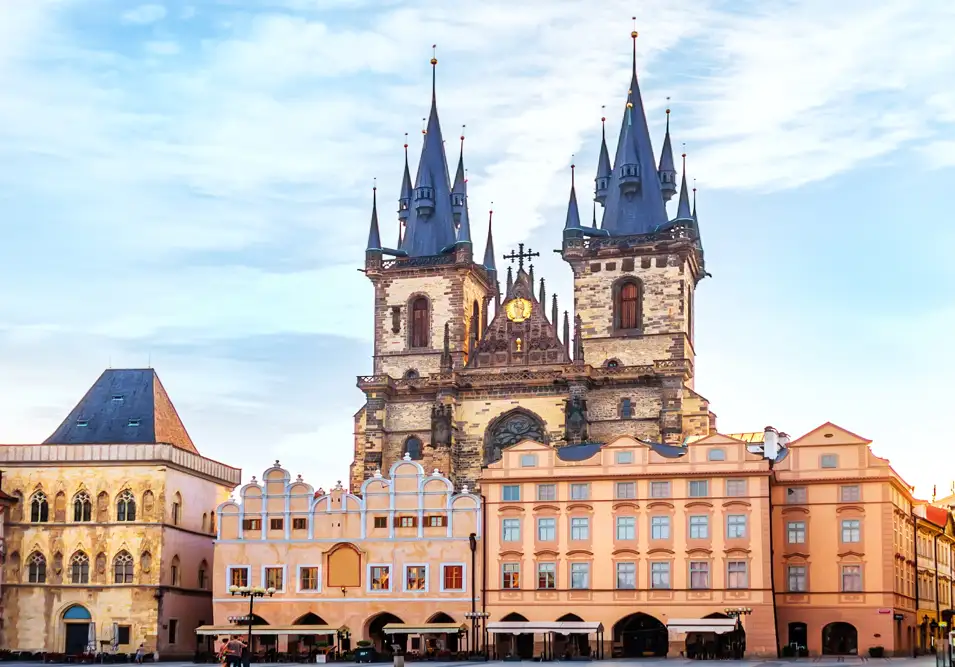
Prague
The city of Prague is indisputably the gem of Central Europe. Full of history, culture, and classic Czech pubs around every corner, Prague is teeming with nooks and crannies just waiting to be discovered. The narrow cobblestone streets and warm red rooftops give the city a homey feel, while the well-preserved medieval architecture transports you back in time. Walking across the Charles Bridge with the view of the Prague Castle will make you feel like you’re living in a fairytale, and you might as well be. As an up-and-coming destination, Prague is a perfect mix of classic and modern. New trendy cafes and bistros are always popping up, and you can always find a group of lively locals chowing down on goulash and quaffing pivo (the best beer in Europe!) at traditional Czech restaurants across the city. The clash of modernity and tradition, preservation and innovation, gives this city a mysterious air that you won’t soon forget.

Learn About Prague
Build Prague Trip
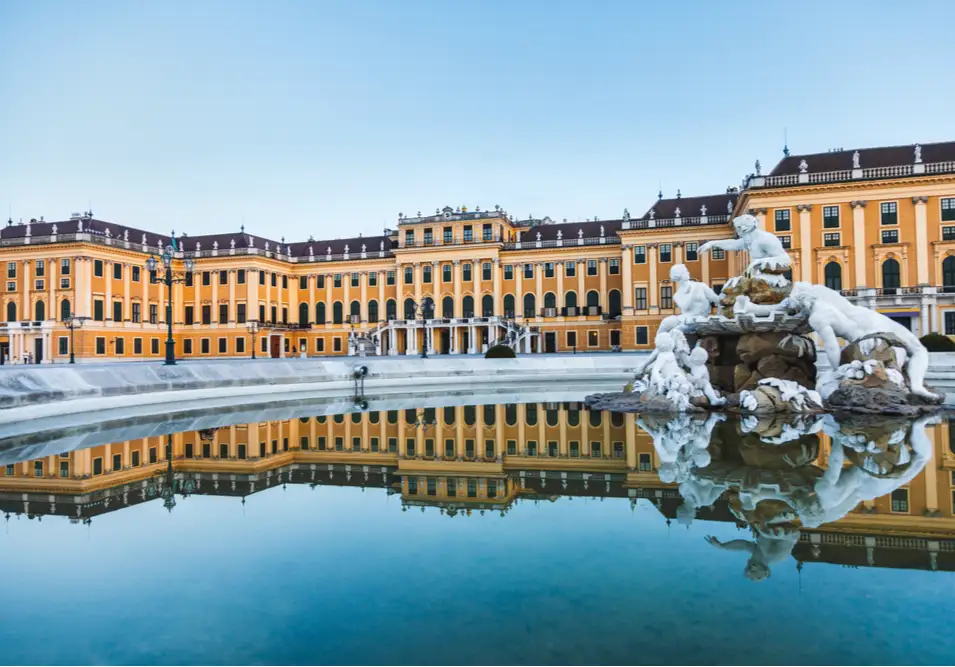
Vienna
Artistic and musical, historical and elegant, Vienna is the definition of class. The seat of the Habsburg monarchy for over six centuries, it's no wonder this city is still fit for royalty. Baroque buildings and imperial palaces dominate the cityscape, while locals stride gracefully through the streets, likely on their way to a classical music concert or art exhibition. Visitors from all over the world flock to Schonbrunn Palace, historical museums, and local eateries for authentic Viennese schnitzel. Vienna is also home to world-class wining and dining. Famous dishes include Wiener schnitzel, Tafelspitz (prime boiled beef), and apfelstrudel (apple strudel), all of which pair well with a glass of fine Austrian wine. No matter how long you spend in Vienna, you'll leave with a new appreciation for the finer things in life.

Learn About Vienna
Build Vienna Trip
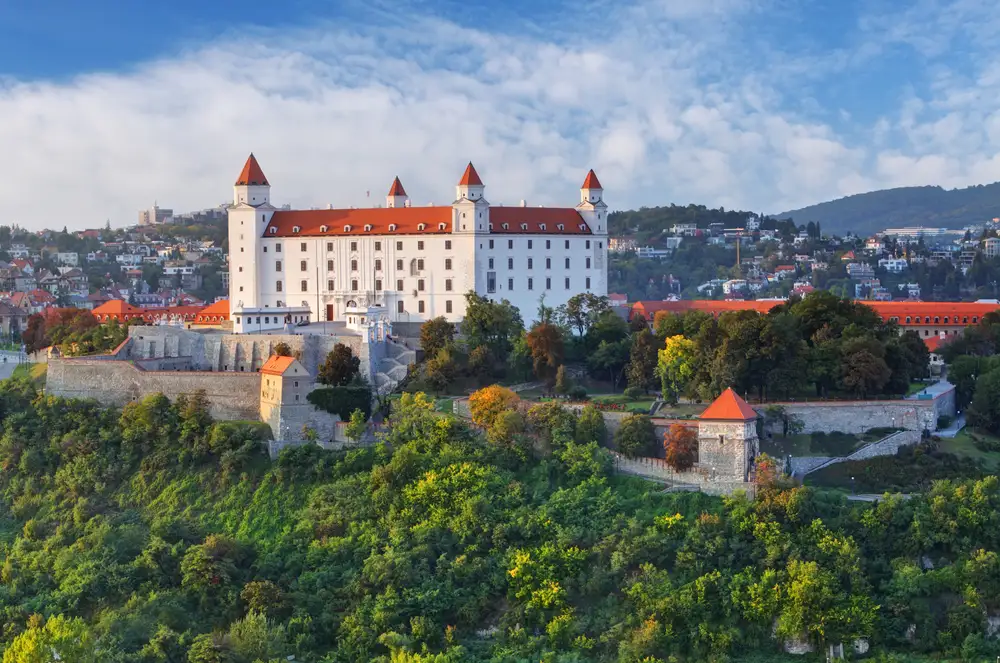
Bratislava
Bratislava is one of the most up-and-coming cities in central Europe. After years in the shadows of the Soviet bloc, and often drowned out by Prague, Bratislava has finally broken out. The Bratislavan region is now one of the richest per capita in the EU. This economic upswing has infused Bratislava with a newfound zeal. Trendy cafes and cool shopping centers are popping up everywhere, and the city’s already happening nightlife scene is only set to get better. Still less crowded than its central European neighbors Prague, Vienna, and Budapest, but just as intriguing, there’s really never been a better time for a visit to Bratislava. Ruled over by the Hungarians, Austrians, and most recently the Soviets, Bratislava is a city of strange contrasts. As soon as you arrive in Bratislava, you’ll see the pastel-hued churches, baroque houses, and the cobbled Old Town Square brush shoulders with modern brutalist buildings, retrofuturistic towers, and the clunky communist built UFO bridge. The city’s oldest building, its castle, is set atop the western edge of the Little Carpathian Hills like a trophy, the city’s hard-won main icon. For the first time in nearly a millennium, Bratislava has now seized control of its own destiny, and it shows.

Learn About Bratislava
Build Bratislava Trip
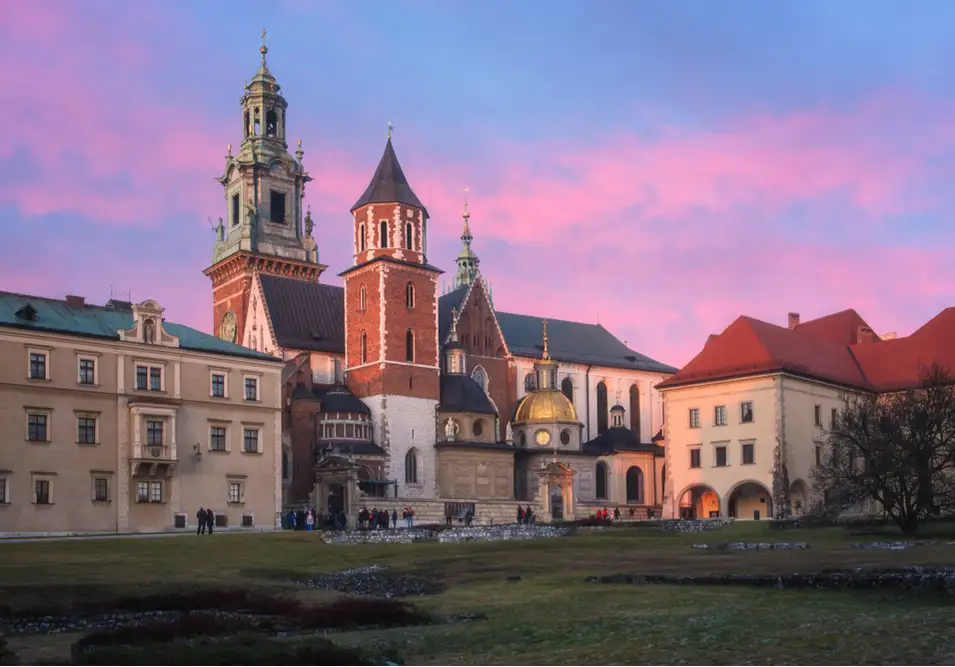
Krakow
Krakow is a city in the south of Poland and the country’s former royal capital. Thought to have been inhabited for tens of thousands of years, the history here seems to sit comfortably alongside the vibrant, young city that is Krakow today. The main market square at Krakow’s center is overlooked by St Mary’s Basilica, a perfect example of Polish Gothic architecture and a UNESCO World Heritage Site. The square itself is usually filled with life, as the pubs and restaurants around the edges spill out onto the sidewalks. Winter is cold here, but that’s just a perfect excuse to slip inside a cozy, well-heated pub and sip hot mulled wine over a hearty Polish dinner. With all of Krakow’s heady charm, it can be easy to forget the all-too-recent atrocities that occurred in this region. A short trip to the Auschwitz-Birkenau concentration camp nearby, where the Nazis committed their genocide, provides a sober but important reminder of that past. A hard past exists alongside a happy and electric present in Krakow, a city that has endured centuries of trials and emerged looking better than ever.

Learn About Krakow
Build Krakow Trip
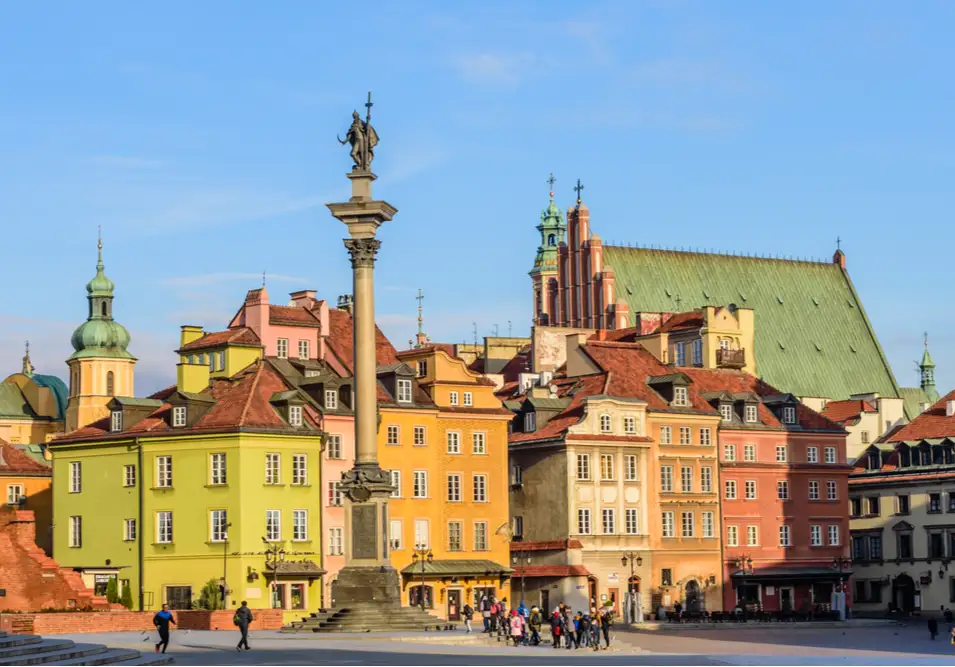
Warsaw
Warsaw is a place that seems almost indestructible. Nearly bombed out of existence in World War II, the city rebuilt itself out of the rubble, and today it’s a shining example of a thriving European capital with a lot to offer. History forms a big part of Warsaw’s allure. Occupied by the Nazis, and losing much of its Jewish population to the Holocaust, Warsaw has several museums dedicated to remembering its dark past. The Warsaw Uprising Museum, POLIN Museum of the History of Polish Jews, and National Museum are among the most prominent. Although its past has been troubled, Warsaw’s present is anything but. The city contains countless opportunities for fun, with a blossoming nightlife scene and a vibrant cafe culture. After a day of wandering through the old streets and charming squares, there are plenty of places to enjoy a meal, from high-end restaurants to affordable milk bars. Warsaw is a place for reflection and remembrance, but also a place that looks firmly towards the future, a future that for this city— appears increasingly bright.

Learn About Warsaw
Build Warsaw Trip
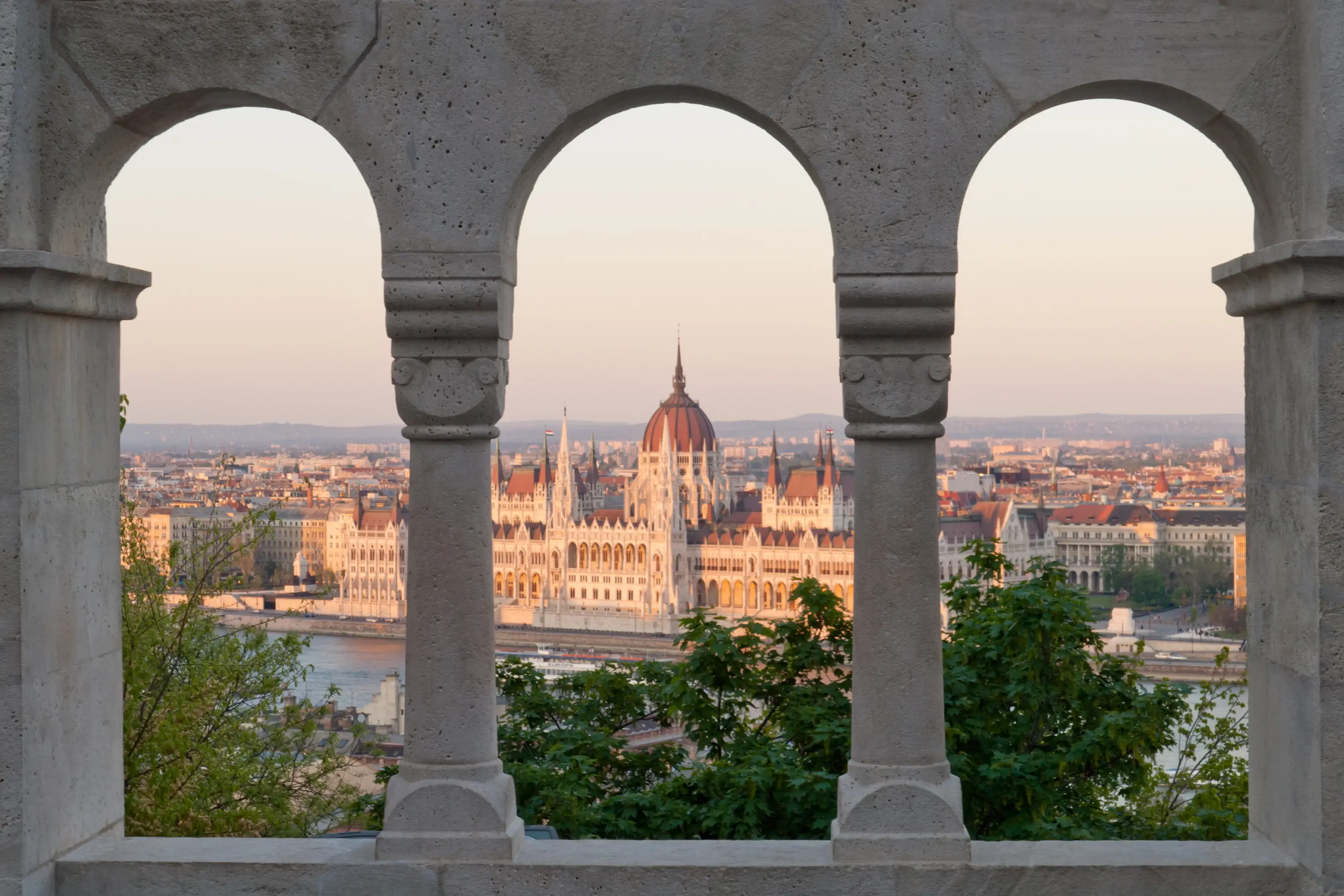
Budapest
Situated at the heart of Europe, Budapest is the capital of Hungary, appropriately named 'The Pearl of the Danube,' for its fixating and almost haunting beauty. Formerly two separate cities, Buda and Pest were forged into one by time, occupation, and the eight bridges that anchor them together today. From the Romans to the Communists, each occupier left its flavor profile in Budapest, evident in the famous spicy Hungarian stew known as 'goulash.' Budapest is a melting pot of history, culture, and taste, from the magnificent Baroque and neo-Gothic architecture to the Turkish thermal baths. After a long day of sightseeing, treat yourself to a glass of Tokaj, what King Louis XIV of France referred to as the "Wine of Kings, King of Wines". Budapest has a flavor to satisfy any taste.

Learn About Budapest
Build Budapest Trip

Prague
The city of Prague is indisputably the gem of Central Europe. Full of history, culture, and classic Czech pubs around every corner, Prague is teeming with nooks and crannies just waiting to be discovered. The narrow cobblestone streets and warm red rooftops give the city a homey feel, while the well-preserved medieval architecture transports you back in time. Walking across the Charles Bridge with the view of the Prague Castle will make you feel like you’re living in a fairytale, and you might as well be. As an up-and-coming destination, Prague is a perfect mix of classic and modern. New trendy cafes and bistros are always popping up, and you can always find a group of lively locals chowing down on goulash and quaffing pivo (the best beer in Europe!) at traditional Czech restaurants across the city. The clash of modernity and tradition, preservation and innovation, gives this city a mysterious air that you won’t soon forget.

Learn About Prague
Build Prague Trip

Vienna
Artistic and musical, historical and elegant, Vienna is the definition of class. The seat of the Habsburg monarchy for over six centuries, it's no wonder this city is still fit for royalty. Baroque buildings and imperial palaces dominate the cityscape, while locals stride gracefully through the streets, likely on their way to a classical music concert or art exhibition. Visitors from all over the world flock to Schonbrunn Palace, historical museums, and local eateries for authentic Viennese schnitzel. Vienna is also home to world-class wining and dining. Famous dishes include Wiener schnitzel, Tafelspitz (prime boiled beef), and apfelstrudel (apple strudel), all of which pair well with a glass of fine Austrian wine. No matter how long you spend in Vienna, you'll leave with a new appreciation for the finer things in life.

Learn About Vienna
Build Vienna Trip

Bratislava
Bratislava is one of the most up-and-coming cities in central Europe. After years in the shadows of the Soviet bloc, and often drowned out by Prague, Bratislava has finally broken out. The Bratislavan region is now one of the richest per capita in the EU. This economic upswing has infused Bratislava with a newfound zeal. Trendy cafes and cool shopping centers are popping up everywhere, and the city’s already happening nightlife scene is only set to get better. Still less crowded than its central European neighbors Prague, Vienna, and Budapest, but just as intriguing, there’s really never been a better time for a visit to Bratislava. Ruled over by the Hungarians, Austrians, and most recently the Soviets, Bratislava is a city of strange contrasts. As soon as you arrive in Bratislava, you’ll see the pastel-hued churches, baroque houses, and the cobbled Old Town Square brush shoulders with modern brutalist buildings, retrofuturistic towers, and the clunky communist built UFO bridge. The city’s oldest building, its castle, is set atop the western edge of the Little Carpathian Hills like a trophy, the city’s hard-won main icon. For the first time in nearly a millennium, Bratislava has now seized control of its own destiny, and it shows.

Learn About Bratislava
Build Bratislava Trip

Krakow
Krakow is a city in the south of Poland and the country’s former royal capital. Thought to have been inhabited for tens of thousands of years, the history here seems to sit comfortably alongside the vibrant, young city that is Krakow today. The main market square at Krakow’s center is overlooked by St Mary’s Basilica, a perfect example of Polish Gothic architecture and a UNESCO World Heritage Site. The square itself is usually filled with life, as the pubs and restaurants around the edges spill out onto the sidewalks. Winter is cold here, but that’s just a perfect excuse to slip inside a cozy, well-heated pub and sip hot mulled wine over a hearty Polish dinner. With all of Krakow’s heady charm, it can be easy to forget the all-too-recent atrocities that occurred in this region. A short trip to the Auschwitz-Birkenau concentration camp nearby, where the Nazis committed their genocide, provides a sober but important reminder of that past. A hard past exists alongside a happy and electric present in Krakow, a city that has endured centuries of trials and emerged looking better than ever.

Learn About Krakow
Build Krakow Trip

Warsaw
Warsaw is a place that seems almost indestructible. Nearly bombed out of existence in World War II, the city rebuilt itself out of the rubble, and today it’s a shining example of a thriving European capital with a lot to offer. History forms a big part of Warsaw’s allure. Occupied by the Nazis, and losing much of its Jewish population to the Holocaust, Warsaw has several museums dedicated to remembering its dark past. The Warsaw Uprising Museum, POLIN Museum of the History of Polish Jews, and National Museum are among the most prominent. Although its past has been troubled, Warsaw’s present is anything but. The city contains countless opportunities for fun, with a blossoming nightlife scene and a vibrant cafe culture. After a day of wandering through the old streets and charming squares, there are plenty of places to enjoy a meal, from high-end restaurants to affordable milk bars. Warsaw is a place for reflection and remembrance, but also a place that looks firmly towards the future, a future that for this city— appears increasingly bright.

Learn About Warsaw
Build Warsaw Trip

Budapest
Situated at the heart of Europe, Budapest is the capital of Hungary, appropriately named 'The Pearl of the Danube,' for its fixating and almost haunting beauty. Formerly two separate cities, Buda and Pest were forged into one by time, occupation, and the eight bridges that anchor them together today. From the Romans to the Communists, each occupier left its flavor profile in Budapest, evident in the famous spicy Hungarian stew known as 'goulash.' Budapest is a melting pot of history, culture, and taste, from the magnificent Baroque and neo-Gothic architecture to the Turkish thermal baths. After a long day of sightseeing, treat yourself to a glass of Tokaj, what King Louis XIV of France referred to as the "Wine of Kings, King of Wines". Budapest has a flavor to satisfy any taste.

Learn About Budapest
Build Budapest Trip
prev
next


 Map of Your Itinerary Route
Map of Your Itinerary Route
Zoom In to the cities to see your itinerary in more detail


 4.8
4.8 






